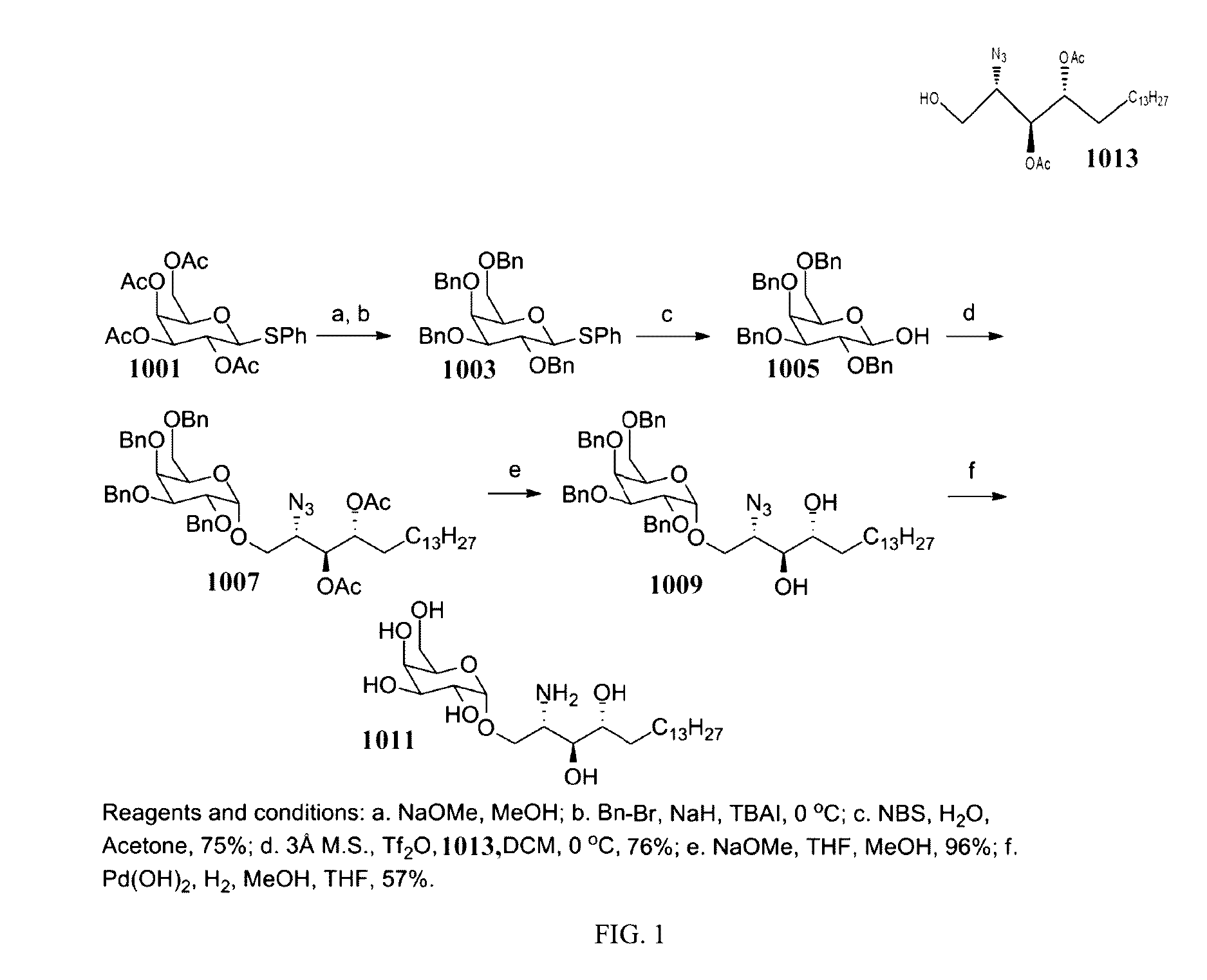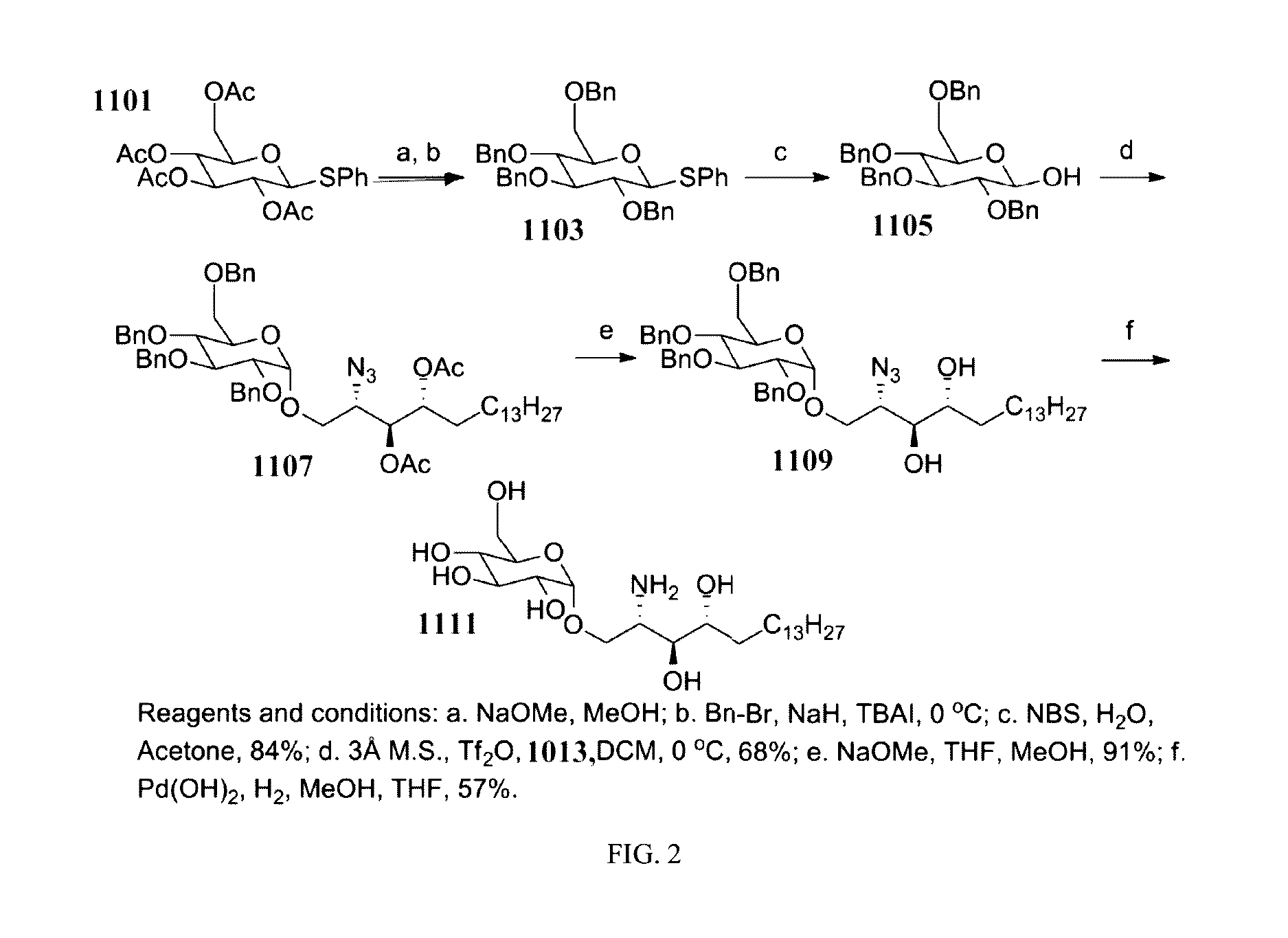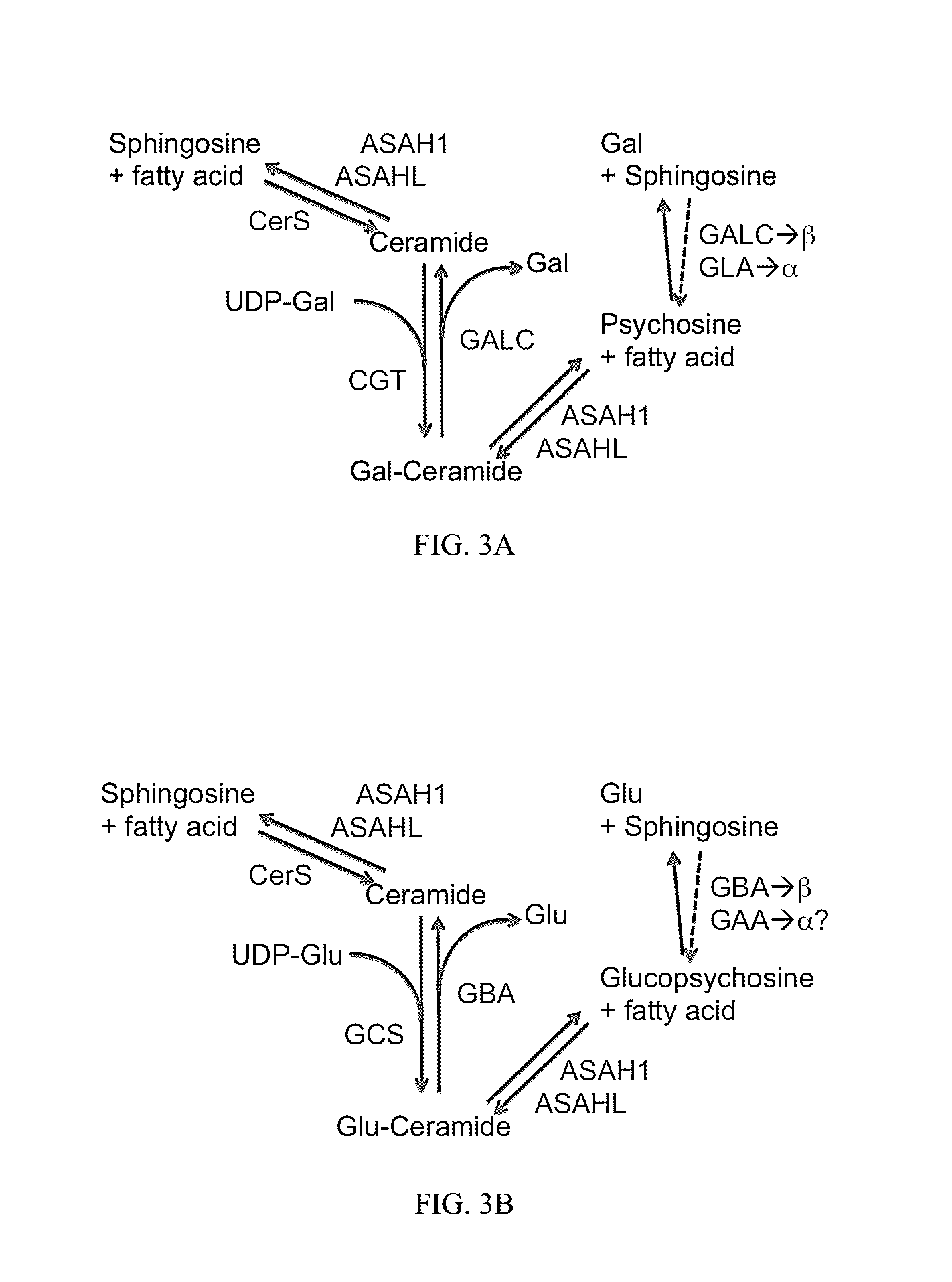Nkt cell ligands and methods of use
a technology applied in the field of nkt cell ligands and methods of use, can solve the problems that the chemistry of these potential candidates has proved difficult to study, and achieve the effects of stimulating an immune response, and enhancing expression of -glycosylceramides
- Summary
- Abstract
- Description
- Claims
- Application Information
AI Technical Summary
Benefits of technology
Problems solved by technology
Method used
Image
Examples
example 1
[0202]The following materials and methods were used in the experiments described in Examples 2-6.
[0203]Chemicals and Inhibitors.
[0204]Lipopolysaccharide from Salmonella Abortus was obtained from Sigma. Recombinant IL-4, TNF, GM-CSF were obtained from InVitrogen. 1-Deoxynojirimycin, N-[(1R,2R)-2-hydroxy-1-(hydroxymethyl)-2-(4-nitrophenyl)ethyl]-tetradecanamide (D-NMAPPD), E)-3-(3-(4-methoxyphenyl)acryloyl)-4-phenylquinolin-2(1H)-one (Ceranib-2) were obtained from Cayman Chemical (Ann Arbor, Mich.). 1-Deoxygalactononojirimycin, 1-(2-Biphenyl-4-yl)ethyl-carbonyl pyrrolidine (NAAA inhibitor) was synthesized according to Li et al., 2012, PLoS One, 7:e43023. Carmofur (1-Hexylcarbamoyl-5-fluorouracil) was obtained from Sigma-Aldrich (St. Louis, Mo.). Synthetic commercial glucosylceramides and galactosylceramides were obtained from Avanti Polar Lipids (Alabaster, Ala.) and Matreya (Pleasant Gap, Pa.).
[0205]Cells and Cell Lines, DC Maturation.
[0206]DN32.D3 and TBA.7 cells...
example 2
An Anti-CD1d-aGalCer Antibody Blocks Autoreactivity of CD1 Expressing Cells Towards NKT Cells
[0229]NKT cells have a memory phenotype and hallmarks of “pre-activation” when analyzed ex vivo. In vitro they have been described as being highly autoreactive by their propensity at being activated by syngeneic target cells expressing CD1d molecules (Bendelac et al. 2007, Annual Rev. Immuno., 25:297; Park et al., 1998, J. Immunol., 160:3128). This phenomenon can be illustrated by the activation of Vα14 NKT hybridoma cell DN32.D3 against RBL-CD1, a CD1d positive cell line, that have been stimulated by TLF ligands. Stimulation of DN32.D3 cells and TBA.7 cells, a non-Vα14 NKT cell hybridoma, was tested against RBL-CD1 or RBL-CD1 SAP− / − in which saponin expression was knocked down by interfering RNAs. The hybridoma cells were cultured in RPMI supplemented with 10% FCS, 2 mM L−glutamine, 20 mM HEPES, and non-essential amino acids. Antigen presentation assays were carried out using 5-20×103 DC 3....
example 3
The Stimulatory Activity of Commercial β-Glucosylceramide 24:1 is not Attributable to β-Glucosylceramide
[0235]β-glucosylceramides (βGluCer) are believed to be natural endogenous ligand of NKT cells, and synthetic preparation of C12 and C24:1 βGluCer have been shown to be strong activators of type 1 NKT cells (Brennan et al., 2011, Nature Immunology, 12:1202). However, due to limitations of analytical methods for detecting and measuring lipids, the possibility of α-anomers contaminating the synthetic preparations and potentially contributing to the stimulatory activity of the preparations could not be easily ruled out.
[0236]A large quantity of commercial C24:1 βGluCer and isolated 7 fractions were re-purified by normal phase chromatography performed on a Thermo Hypersil Sax column using 95:5 methanol:H2O, 5 mM ammonium acetate loading / wash buffer and dicholormethane for elution. The seven collected fractions were analyzed by high performance TLC and immunoblotting using a rabbit anti...
PUM
| Property | Measurement | Unit |
|---|---|---|
| Structure | aaaaa | aaaaa |
| Immunogenicity | aaaaa | aaaaa |
Abstract
Description
Claims
Application Information
 Login to View More
Login to View More - R&D
- Intellectual Property
- Life Sciences
- Materials
- Tech Scout
- Unparalleled Data Quality
- Higher Quality Content
- 60% Fewer Hallucinations
Browse by: Latest US Patents, China's latest patents, Technical Efficacy Thesaurus, Application Domain, Technology Topic, Popular Technical Reports.
© 2025 PatSnap. All rights reserved.Legal|Privacy policy|Modern Slavery Act Transparency Statement|Sitemap|About US| Contact US: help@patsnap.com



